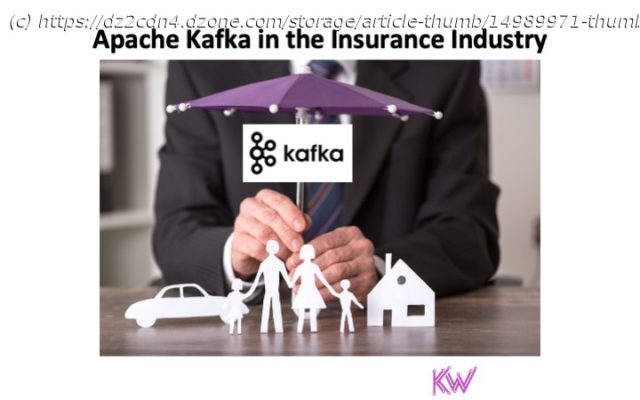Learn about the rise of data in motion with Apache Kafka in the insurance industry. Examples from Generali, Centene, Humana, Tesla, and more …
Join the DZone community and get the full member experience. The rise of data in motion in the insurance industry is visible across all lines of business, including life, healthcare, travel, vehicle, and others. Apache Kafka changes how enterprises rethink data. This blog post explores use cases and architectures for event streaming. Real-world examples from Generali, Centene, Humana, and Tesla show innovative insurance-related data integration and stream processing in real-time. Most insurance companies have similar challenges: Only a good transformation strategy guarantees a successful future for traditional insurance companies. Nobody wants to become the next Nokia (mobile phone), Kodak (photo camera), or BlockBuster (video rental). If you fail to innovate in time, you are done. Real-time beats slow data. Automation beats manual processes. The combination of these two game changers creates completely new business models in the insurance industry. Some examples: These are just a few examples. The shift to real-time data processing and automation is key for many other use cases, too. Machine learning and deep learning enable the automation of many manual and error-prone processes like document and text processing. Traditional insurance companies usually (have to) start with brownfield integration before building new use cases. The integration of legacy systems with modern application infrastructures and the replication between data centers and public or private cloud-native infrastructures are key pieces of the puzzle. Common integration scenarios use traditional middleware that is already in place. This includes MQ, ETL, ESB, and API tools. Kafka is complementary to these middleware tools: More details about this topic are available in the following two posts: Insurtechs have a huge advantage: They can start greenfield. There is no need to integrate with legacy applications and monolithic architectures. Hence, some traditional insurance companies go the same way. They start from scratch with new applications instead of trying to integrate old and new systems. This setup has a huge architectural advantage: There is no need for traditional middleware as only modern protocols and APIs need to be integrated. No monolithic and proprietary interfaces such as Cobol, EDI, or SAP BAPI/iDoc exist in this scenario. Kafka makes new applications agile, scalable, and flexible with open interfaces and real-time capabilities. Here is an example of an event streaming architecture for claim processing and fraud detection with the Kafka ecosystem: Let’s take a look at a few examples of real-world deployments of Kafka in the insurance industry. Generali is one of the top ten largest insurance companies in the world. The digital transformation from Generali Switzerland started with Confluent as a strategic integration platform. They started their journey by integrating with hundreds of legacy systems like relational databases. Change Data Capture (CDC) pushes changes into Kafka in real-time. Kafka is the central nervous system and integration platform for the data. Other real-time and batch applications consume the events.






